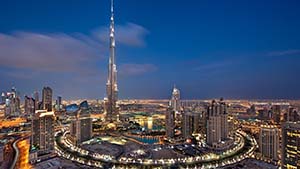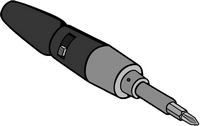 A few weeks ago, first-time author Jerry Kaczmorowski emailed me and asked if I would like to review his book Moon Rising. He told me that there was an American-built space elevator involved (as well as some other details I’ll let the reader explore) and, of course, that was enough to get me to say “Yes”.
A few weeks ago, first-time author Jerry Kaczmorowski emailed me and asked if I would like to review his book Moon Rising. He told me that there was an American-built space elevator involved (as well as some other details I’ll let the reader explore) and, of course, that was enough to get me to say “Yes”.
I finished the book shortly after I started it – here is the review I put on Amazon:
This is an excellent book, especially for a first-time author. The plot is rich and detailed and keeps the reader guessing. The characters are believable and the action is non-stop. Once I started reading it, I didn’t want to put it down and I believe that others who are fortunate enough to take a chance on this new author will feel the same.
As the author of the Space Elevator Blog, I’m always intrigued by a new book with a Space Elevator as the theme or the backdrop. I’m also always worried because the authors of many of these types of books have obviously not done their homework on how a Space Elevator could be built or could work – they seem to have skipped all of their science and math classes in school.
Thankfully this book is not like that. The author doesn’t delve deeply into Space Elevator architecture (it’s not the focus of the book), but what technical details he does write about are plausible. What this book also does is show WHY we would want to build a Space Elevator and then presents a scenario as to HOW a Space Elevator might actually come about. I don’t want to spoil the plot for new readers, but suffice it to say that, in this book, the world does NOT come together, sing “Kumbaya” and then build a Space Elevator for the advancement of all mankind.
I do have a couple of nits; the characters seem a bit one-dimensional at times and the villains are the “usual suspects”. Nevertheless, adding everything together, I give this book 5 well-deserved stars and I look forward to this author’s next effort.
The author is going to be at the upcoming ISEC Space Elevator Conference (you ARE coming, yes?) and I look forward to meeting him.
And, buy the book – you’ll enjoy reading it!

 The July, 2014 issue of the ISEC eNewsletter is hot off the presses. You can access it
The July, 2014 issue of the ISEC eNewsletter is hot off the presses. You can access it  The second video discusses tall structures built by humans and ends in speculation about building a space elevator. Nice to see that the author/narrator (
The second video discusses tall structures built by humans and ends in speculation about building a space elevator. Nice to see that the author/narrator ( Yes, they take such things very seriously in the Middle East (and, I assume, wherever Muslims live in great numbers). I lived in Saudi Arabia for eight years and, during the times I was in-Kingdom for Ramadan (Eid Al-Fitr) and/or Islamic New Years (Eid al-Adha), I was greatly intrigued by the attention that was paid to this. The newspapers would project the actual clock times these events would begin. For Ramadan, as noted above, it was when the sun set on a certain day. For New Years, it was the first sighting of the new crescent moon during the proper lunar cycle. When this happened for New Years (in Jeddah, at least) a ceremonial cannon would be fired and the person who first sighted the new moon would win a prize. There is a story (probably apocryphal) about someone who happened to walk in front of the ceremonial cannon just as it was set off and was blown to bits. No, I don’t believe it either…
Yes, they take such things very seriously in the Middle East (and, I assume, wherever Muslims live in great numbers). I lived in Saudi Arabia for eight years and, during the times I was in-Kingdom for Ramadan (Eid Al-Fitr) and/or Islamic New Years (Eid al-Adha), I was greatly intrigued by the attention that was paid to this. The newspapers would project the actual clock times these events would begin. For Ramadan, as noted above, it was when the sun set on a certain day. For New Years, it was the first sighting of the new crescent moon during the proper lunar cycle. When this happened for New Years (in Jeddah, at least) a ceremonial cannon would be fired and the person who first sighted the new moon would win a prize. There is a story (probably apocryphal) about someone who happened to walk in front of the ceremonial cannon just as it was set off and was blown to bits. No, I don’t believe it either… Sometimes the simplest ideas are the best. A couple of weeks ago, the Technion Institute in Israel held a Space Elevator competition (I’ve previously posted about this competition
Sometimes the simplest ideas are the best. A couple of weeks ago, the Technion Institute in Israel held a Space Elevator competition (I’ve previously posted about this competition